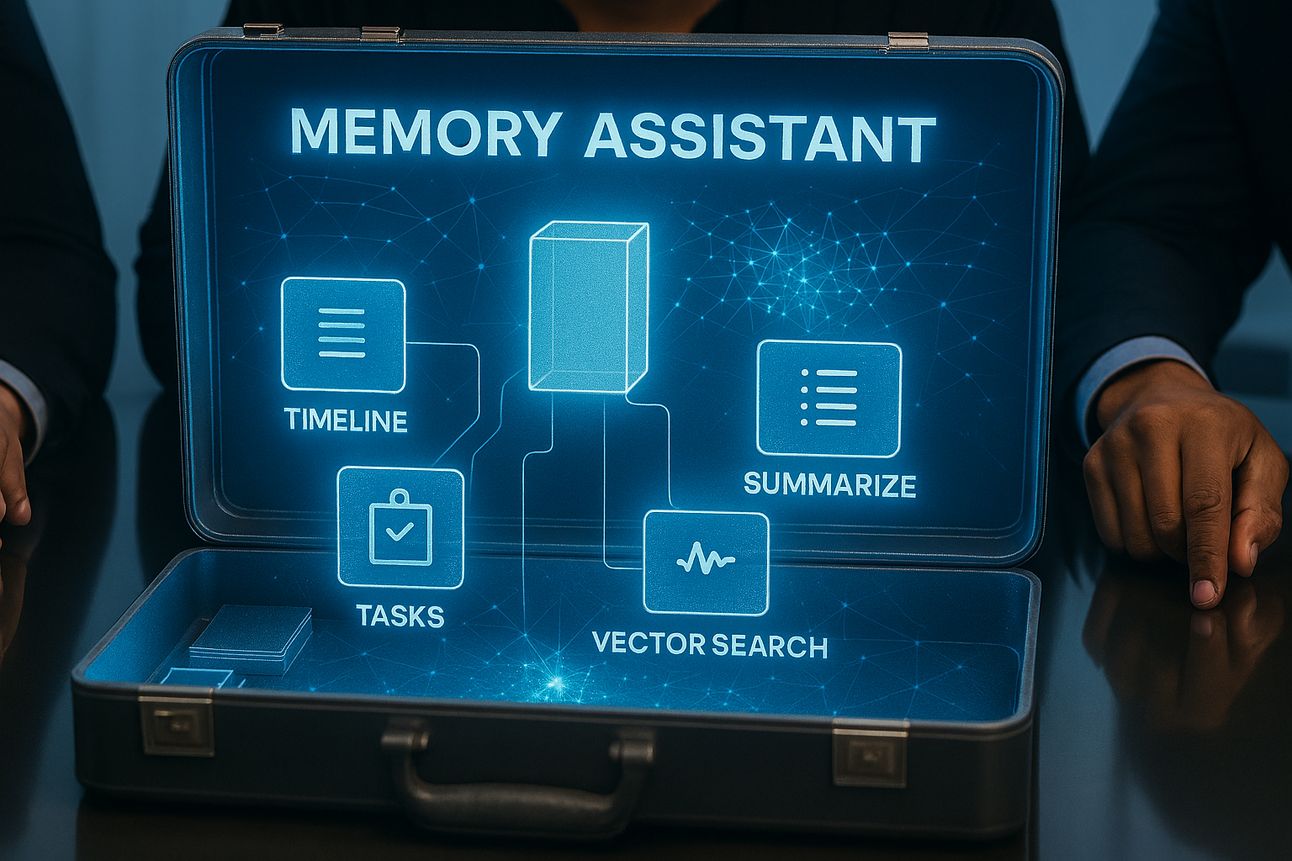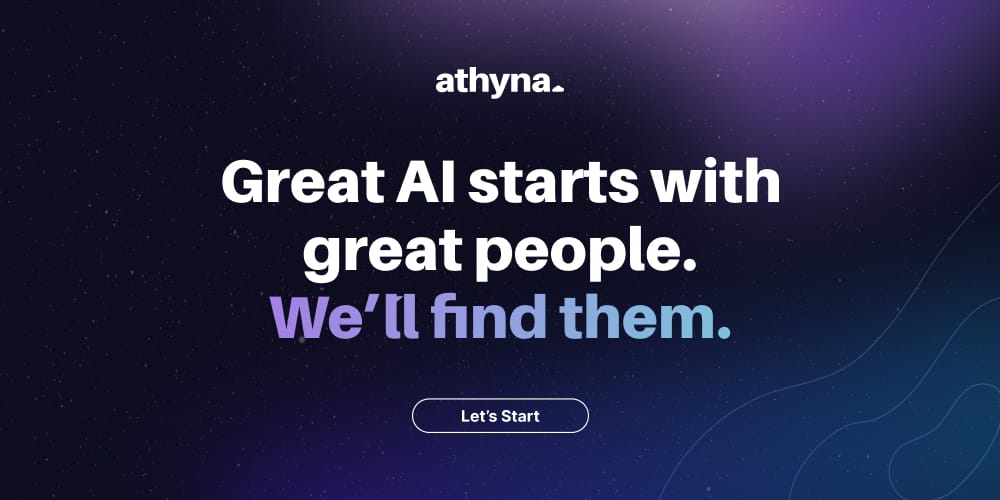AI jargon cycles faster than AI itself.
A few months back we heard "vibe coding", now contextual AI is having its moment.
Early AI adopters leaned heavily on prompt engineering—tweaking inputs like formulas to coax the right output from language models.
But as enterprise adoption matures, the smartest organizations are discovering a more durable approach: context engineering.

🎙️ AI Confidential Podcast - Confidential Computing Summit 2025
☕️ AI Tangle - OpenAI's General-Purpose "ChatGPT Agent" Enters The Fray
🔮 AI Lesson - Five Prompting Methods Every AI User Should Know
🎯 The AI Marketing Advantage - How AI Is Changing How Brands Approach Creativity
💡 AI CIO - There Is No Moat
📚 AIOS - This is an evolving project. I started with a 14-day free Al email course to get smart on Al. But the next evolution will be a ChatGPT Super-user Course and a course on How to Build Al Agents.

The right hires make the difference.
Scale your AI capabilities with vetted engineers, product managers, and builders—delivered with enterprise rigor.
AI-powered candidate matching + human vetting.
Deep talent pools across LatAm, Africa, SEA.
Zero upfront fees—pay only when you hire.


Contextual AI
Why Context Engineering Beats Prompt Engineering for Real AI Work
Your data team built an AI assistant to auto-summarize client calls. It works great in demos. But in production, results are hit or miss—because one prompt doesn’t fit every rep, client, or context. This is where most enterprise AI initiatives stall—not on model performance, but on missing context. Real success demands a shift from clever prompting to structured context engineering.
What Is Context Engineering?
Prompt engineering is about crafting better inputs. Context engineering is about designing the system around the model so it performs consistently at scale. This means giving it context about the tasks you want it to accomplish.
As Andrej Karpathy notes in this tweet, “Every industrial-strength LLM app is really about filling the context window with just the right information.”
Karpathy, one of the most influential figures in the AI space, previously led Tesla’s AI efforts and served as a founding member of OpenAI. He set the tone for modern prompt-centric programming with the release of Vibe Coding, a landmark talk that reframed how developers think about programming with LLMs.
While large language models are filled with general information, they often lack the specific context needed to solve the problem you're working on. Without this situational grounding—details about the task, audience, prior steps, constraints, or business logic—the AI may produce outputs that are technically fluent but practically irrelevant.
What’s a Context Window?
Every LLM operates with a limited context window—the fixed number of tokens (words, characters, metadata) it can process at once. GPT-4o, for instance, supports up to 128K tokens. Everything the model knows about your request—prompt, examples, retrieved docs, instructions—must fit into that window.
Fill it poorly, and results degrade. Fill it well, and you get robust, on-target outputs.
To translate words to tokens, a rough rule of thumb is that 1 token ≈ 0.75 words. For example, a 1,000-word document typically uses around 1,300–1,400 tokens. Tools like OpenAI’s tokenizer help estimate and manage token counts in production.
How To Context Engineering
Most people think “prompt engineering” means writing clever one-liners for ChatGPT. In business that’s table stakes. The real challenge—and opportunity—is context engineering: the precision craft of feeding just the right information into the model’s context window for optimal output.
Karpathy put it clearly: "People associate prompts with short task descriptions... But every serious LLM app is really about context engineering."
Why This Matters for Enterprise AI Deployments
Enterprise AI isn’t about one prompt, one answer. It’s about systems that deliver reliable, role-specific performance across workflows. That means providing input—and building a software layer across the organization—that can:
Understand the task
Assemble the right context (examples, data, tools, history)
Choose the right model or chain
Manage UX across multiple LLM interactions
This is not a wrapper. It’s a coordinated orchestration layer, and context engineering is its core.
How to Think About Context Engineering?
It’s not just formatting data. It’s answering:
“What exactly does this LLM need to know, and in what structure, to do this job well—every time?”
When you hand work to a large language model, the brief matters as much as the data. Here’s how to make an LLM output sharp, on-brand, and cost-effective.
Task framing and role definition
Tell the model who it is and why it's here—"You are a benefits analyst; draft a summary for HR." Anchoring the role nudges the model toward the domain knowledge and tone your readers expect. Technically, the role won’t give you a more accurate response, but it will guide tone and structure to match user expectations.
Retrieval-augmented generation (RAG)
Connect the model to a retrieval layer so it cites your company wiki instead of guessing. RAG solves a fundamental problem: large language models are trained on massive datasets, but they can't access your specific company documents, recent updates, or proprietary information in real-time. They're like brilliant analysts who've read everything ever published—except your actual files.
Here's how it works: Your documents get chunked and stored in a searchable format. When you ask a question, the system first searches this knowledge base for the most relevant passages—like a smart search engine finding the best excerpts. Then the LLM receives both your original question AND the retrieved passages, crafting an answer that combines its general knowledge with your specific information.
Without RAG:
User: "What's our return policy?"
LLM: "I don't have access to your specific return policy, but typically companies allow..."
With RAG:
User: "What's our return policy?"
System retrieves: [Company policy doc, section 4.2: "All items returnable within 30 days with receipt..."]
LLM: "According to your company policy, all items are returnable within 30 days with receipt. Here are the specific conditions..."
Result: fewer hallucinations, tighter sourcing, no manual copy-paste.
Few-shot examples
Show, don't tell. A couple of well-chosen Q&A pairs steer the model better than a page of instructions. Drop them right after the system prompt so the AI can imitate your structure and detail level.
Multimodal inputs
Models now read tables, screenshots, even product photos. Feed the budget spreadsheet alongside the plain-language brief—the AI cross-references both to produce a narrative that matches the numbers.
State memory and session threading
Keep the shopping cart (current state) separate from long-term preferences (memory) and tag every conversation with a thread ID. Users can return days later and pick up exactly where they left off.
Token compaction and relevance filtering
LLMs read only so many tokens at once. Summaries, deduplication, and similarity scoring trim your prompt to the essentials before it hits the model. You pay for fewer tokens and reduce distraction.
The sweet spot is balance. Starve the model of context and it hallucinates. Flood it with everything and costs climb while precision falls. These six layers give you that balance—nothing less, nothing more.

I built the Artificially Intelligent Operating System (AIOS) to ensure that anyone—regardless of background—can gain the skills to capitalize in the age of AI. Whether you’re a business leader, operator, builder, or career professional, this platform is designed to help you apply AI, not just understand it.
You don’t need a PhD in machine learning—you need a practical framework for integrating AI into the work you already do.
Get started by enrolling now and you’ll be first in line for a new series of AIOS courses launching later this year.

How to Operationalize Context Engineering
You may be an individual contributor, and this framework works for you as well. But this is really how I’d look at designing your “Enterprise GPT”, the systems that are used throughout your organization.
1. Map Your Task Types
Break business processes into atomic, repeatable units (e.g., “Summarize client call,” “Generate compliance checklist”).
2. Design Context Blueprints
For each task, define:
Inputs needed (data, role, past context)
Format and constraints (tone, length, compliance)
Output type (summary, draft, decision support)
3. Automate Context Assembly
For enterprise systems use middleware to fetch, filter, and format context dynamically:
CRM data → Sales prompt
API logs → Support reply
Doc templates + examples → Analyst draft
4. Add Routing Logic
Decide:
Which model to call (speed vs. depth)
What prompt variant to use (based on user role or urgency)
How to handle failures, feedback, or human-in-the-loop loops
If you’re still training teams to only write better prompts, you’re solving the wrong problem. Train your systems to assemble better context. That’s how AI moves from gimmick to infrastructure.


Memory in ChatGPT helps index past interactions, giving the LLM contextual awareness.
Mem.ai - An AI-powered note system that builds a knowledge graph from your notes, emails, and links. When you open a document it surfaces the most relevant snippets and templates so you start work with full context.
Tana - Outliner that embeds “AI command nodes.” Each node passes surrounding content to an LLM and writes back summaries, tasks, or code, giving every project its own evolving memory.
Vertex AI Agent Engine Memory Bank - the newest managed service of the Google Vertex AI Agent Engine, to help you build highly personalized conversational agents to facilitate more natural, contextual, and continuous engagements (this blog post gives context to why this is cool).
Quivr - Open source “second brain” that builds a private vector store from your files. Custom agents retrieve precise context through embeddings, keeping data self-hosted. Quivr works with any LLM, you can use it with OpenAI, Anthropic, Mistral, Gemma, etc.

Prompt of the Week: Examples of How to Add Context to Your Prompts
The difference between a mediocre AI response and an exceptional one often comes down to one thing: context. While many users focus on crafting the perfect question, the real magic happens when you provide the rich background information that helps AI understand not just what you want, but the world in which that request exists.
This week, we're exploring how to layer context into your prompts to get dramatically better results. The examples below show five different scenarios where strategic context transforms a basic request into a powerful, targeted prompt that delivers exactly what you need.
Why Context Matters
Think of context as the difference between asking a stranger for directions versus asking a local friend. The stranger might give you a route, but the friend knows about the construction on Main Street, the faster shortcut through the park, and that parking is impossible downtown on Fridays. Context is what transforms AI from a stranger into that knowledgeable friend.
In these examples, I've explicitly labeled contextual information to demonstrate the technique, but remember: you don't need to announce "Context:" for this to work. The key is naturally weaving in the background details, constraints, audience information, and environmental factors that shape your ideal response.
Content Creation with Brand Guidelines and Examples
Here’s an example for ChatGPT or Claude, they likely understand how to write a blog post but they don’t know all the details that you want to include, and the point of the blog post. By sharing them you can get a much better output with fewer rewrites and edits.
Create a blog post about sustainable packaging for our eco-friendly startup. Context:
**Company:** GreenWrap Solutions
**Target audience:** Small business owners in retail/e-commerce
**Tone:** Professional but approachable, optimistic about environmental impact
**Word count:** 800-1000 words
Background information:
- Our main product: biodegradable packaging materials
- Key competitor: TraditionalPack Corp (mentioned in Forbes article: https://forbes.com/packaging-trends-2024)
- Recent study shows 73% of consumers prefer sustainable packaging (source: https://sustainabilityreport.com/2024)
- Our case study: helped coffee shop reduce waste by 40% (internal data)
Structure requested:
1. **Hook:** Start with compelling statistic
2. **Problem:** Current packaging waste crisis
3. **Solution:** Benefits of biodegradable alternatives
4. **Case study:** Real customer example
5. **Call to action:** Link to our product page (https://greenwrap.com/products)
Include:
- Hyperlinks to credible sources
- Subheadings with relevant keywords
- Bullet points for key benefits
- *Italicized* emphasis on environmental termsData Analysis with Specific Dataset Context
You might have sales numbers that are pretty standard but your company has a certain format, and certain concerns (e.g. maximizing sales in a certain geography, or profits versus growth). Giving details about how you want to analyze the data will get a better result.
Analyze this sales data and create a presentation summary. Context details:
**Dataset:** Q4 2024 regional sales performance
**Company:** TechGadgets Inc.
**Regions:** North America, Europe, Asia-Pacific
**Products:** Smartphones, Tablets, Accessories
**Time period:** October 1 - December 31, 2024
Key metrics to focus on:
- Revenue growth vs. Q4 2023
- Regional performance differences
- Product category trends
- Holiday season impact (Black Friday data spike noted)
External context:
- Market research shows 15% industry growth (source: https://techanalysis.com/q4-2024-report)
- Our main competitor Samsung reported 12% growth (https://samsung.com/investor-relations)
- iPhone 15 launch in September affected our smartphone sales
Presentation requirements:
- **Executive summary** (2-3 bullet points)
- Visual recommendations (charts/graphs)
- ### Section headers for each region
- Highlight **top performers** and *areas for improvement*
- Include comparison table with industry benchmarks
- End with actionable recommendations
- Reference sources with [text](URL) formatMarketing Strategy
You may have a product launch and you enter that in ChatGPT but without the right details you may not get a response that meets your criteria. You often will have more up-to-date or propriety information available then will be available to the model. In this example you can see examples, of things that are important to you and your organization. The market research in this example comes from the web but you may want to add details you know from analyst reports or other sources that aren’t generally available.
Develop a market entry strategy for our meditation app. Comprehensive context:
**Company:** MindfulMoments
**Product:** AI-powered meditation app with personalized sessions
**Target market:** European Union (initial focus: Germany, France, Netherlands)
**Timeline:** 6-month launch plan
**Budget:** €500,000 marketing budget
Market research context:
- Headspace dominates with 35% market share (source: https://appannie.com/meditation-apps-2024)
- Calm reported €2.1M revenue in EU last quarter (https://calm.com/investor-update)
- Growing demand: 47% increase in meditation app downloads (https://digitalwellness.report/2024)
- GDPR compliance required for EU market (https://gdpr.eu/compliance/)
Competitive analysis:
- **Headspace:** Strong brand, higher pricing (€12.99/month)
- **Calm:** Focus on sleep content, €9.99/month
- **Insight Timer:** Free model with premium features
- *Our advantage:* AI personalization, €7.99/month pricing
Strategy framework requested:
1. **Market sizing** with TAM/SAM/SOM analysis
2. **Go-to-market approach** (channels, partnerships)
3. **Pricing strategy** with competitor comparison table
4. **Marketing mix** (4 P's framework)
5. **Risk assessment** and mitigation plans
6. **Success metrics** and KPIs
Format requirements:
- Use numbered sections (1., 2., 3.)
- Include hyperlinks to supporting data
- Add > blockquotes for key insights
- Bold important metrics and dates
- Create comparison tables where relevant
I appreciate your support.

Your AI Sherpa,
Mark R. Hinkle
Publisher, The AIE Network
Connect with me on LinkedIn
Follow Me on Twitter




